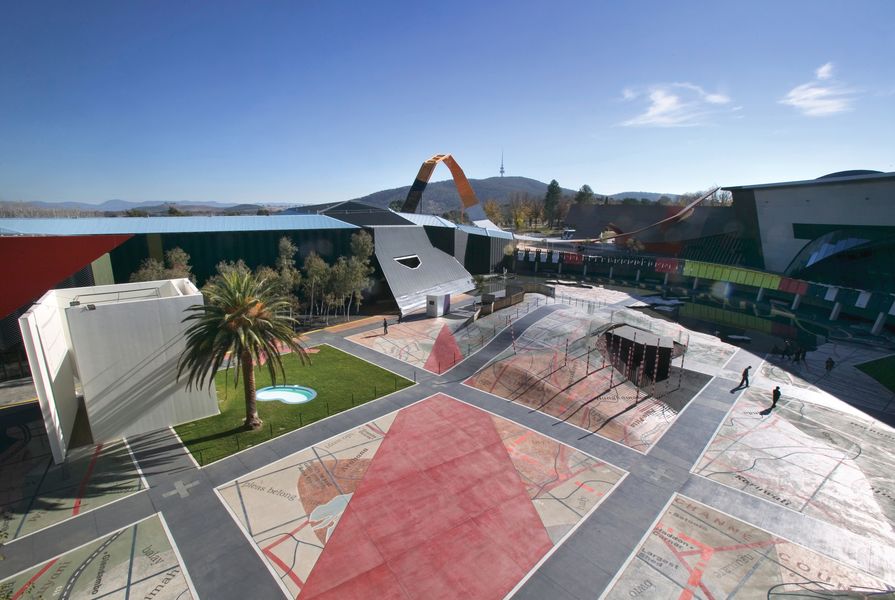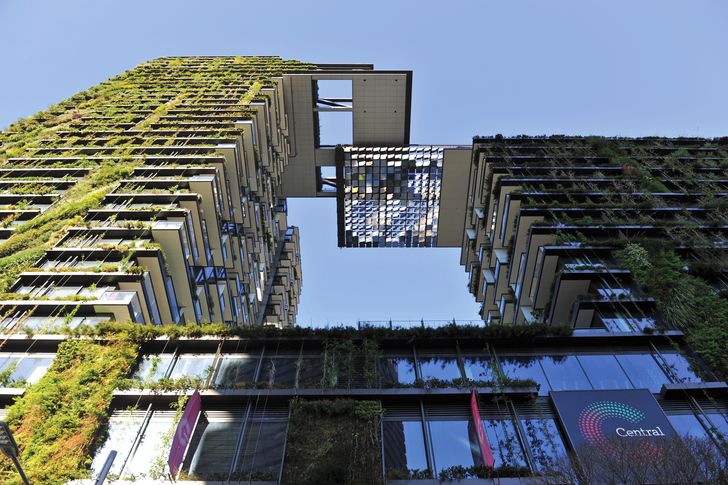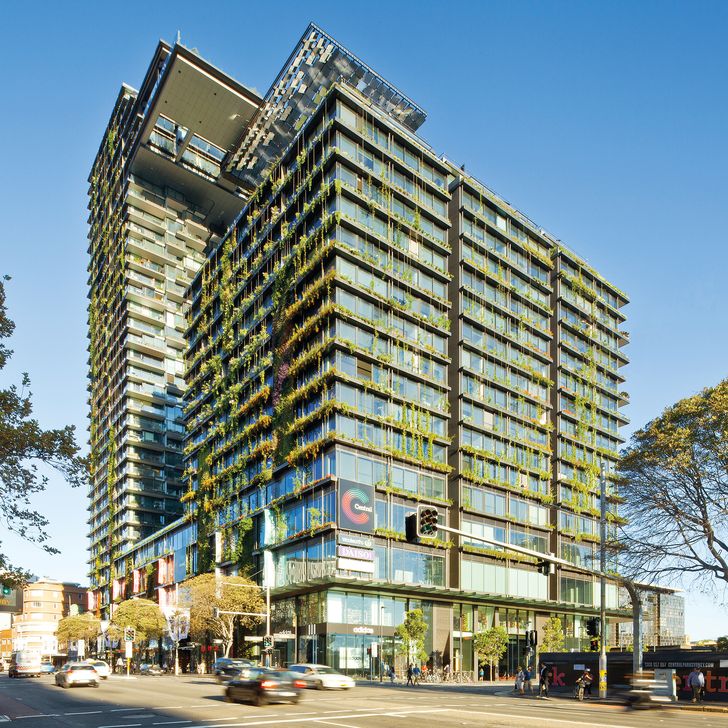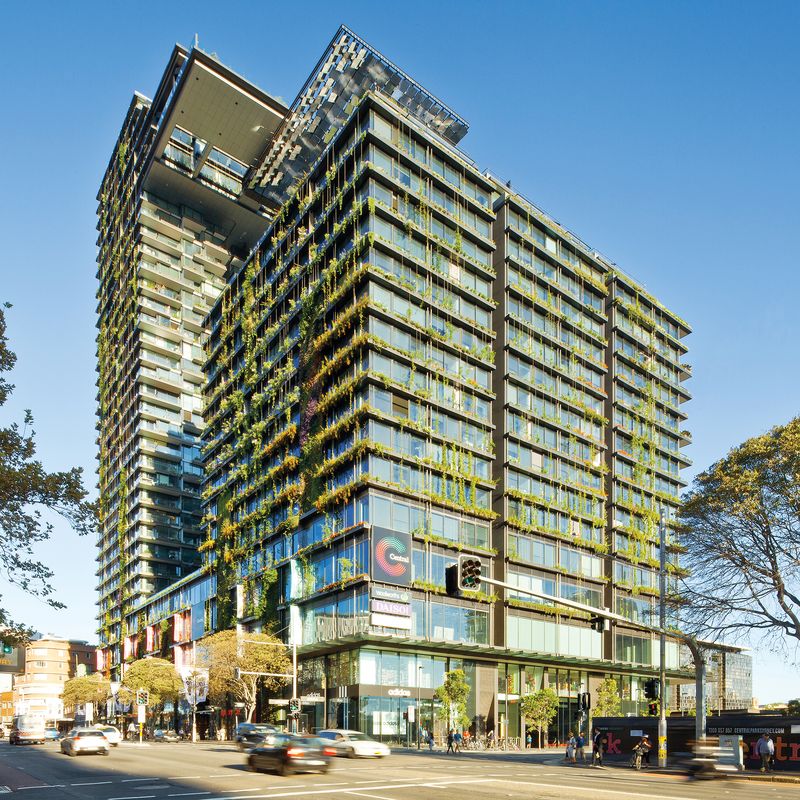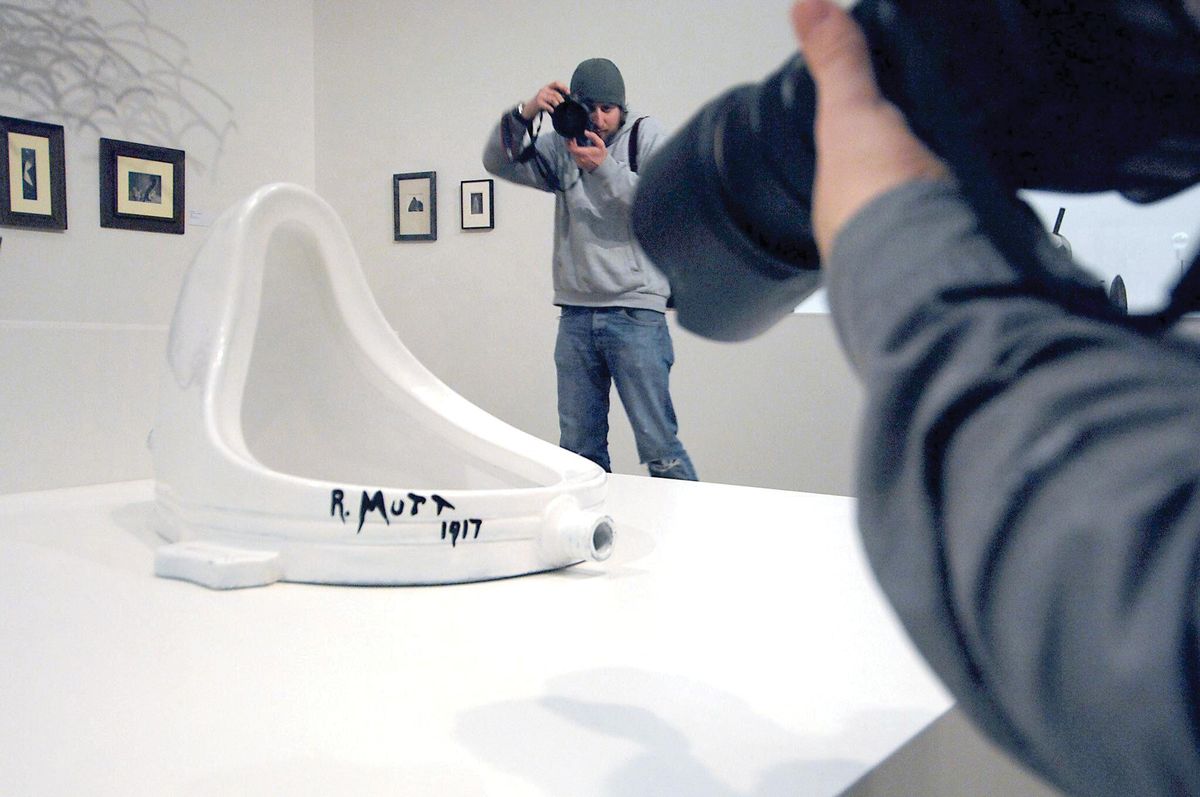In April 1917, Marcel Duchamp exhibited the canonical sculpture Fountain at the Grand Central Palace in New York. Duchamp signed the work “R. Mutt”: a satirical emblem borrowed from “Mott Works,” a manufacturer of sanitary ware. The “artistic work” was a urinal, laid on its side and presented on a pedestal in the gallery. In one simple operation, Duchamp disrupted conventional art practice and the role of the artist, perhaps forever. Conceptual art was born, and ideas about “authorship” have never been the same.
Marcel Duchamp’s Fountain (1917) provoked debate that catalyzed new ways of thinking about – and legislating – intellectual property and authorship.
Image: PA Images/Alamy stock photo.
Authorship in landscape architecture is bound by more conventional norms, deriving primarily from international law: the Berne Convention for the Protection of Literary and Artistic Works (1886).1 Australia’s Copyright Act 19682 (last amended July 2022) gives force to the Convention within the Commonwealth and embodies the long history of copyright law in Australia.3 This lineage can be traced back to the Statute of Anne of 1710,4 an Act of the British Parliament that was designed to protect authors from the losses caused by the copying of their books. This was the moment when a property right was first established in a copy, and it arose as the printing press began to extend the reach of information to a needy public.
This right, or privilege,5 is a commercial right, and it was designed, in part, to encourage authors and institutions to publish, to make accessible the knowledge of the world. This public benefit in copyright laws is arguably what makes palatable the “individual monopoly” of these privileges.
The Berne Convention also confers rights upon authors, and this is the origin of moral rights in our Copyright Act. Introduced into Australian law in 2000, the legislation was soon tested by landscape architects. The right of an author to be attributed and the protections that moral rights might grant us were widely publicized when, in 2003, Richard Weller of landscape architecture firm Room 4.1.3 embarked upon a public campaign to assert these rights.6 The Garden of Australian Dreams at the National Museum of Australia had just been opened and was under threat from the review committee of the Howard government.
The committee wanted substantial change.
Weller responded with threats of legal action, citing moral rights. It is fortunate that this landmark work was not butchered. Legal action did not proceed and the matter was not heard in a court. There have been no cases heard in Australia about moral rights in landscape architecture, and it is not at all clear that the laws in moral rights apply to any of our built works. This is because authors may only claim moral rights for works in which copyright subsists. The Copyright Act certainly applies to a landscape architect’s sketches, drawings,7 writings and documentation, over which employers or design practices hold copyright. Any person who contributed to any of these outputs may claim authorship, and this is a right that cannot be assigned or traded away; it stays with us for life, and 70 years after that.
The Copyright Act extends to buildings; parts of and attachments to buildings;8 and a few related named categories – like works of architecture, painting and sculpture.9 These seem to echo the interests and understanding of British Law Lords. Landscape architects are not mentioned, but our plans and drawings are captured alongside similar artistic works. In this definition lies a conundrum for landscape because the built work must be either fixed in “material form” or “solidified.” If it can’t be so fixed, copyright cannot subsist.10
One might imagine that the Garden of Australian Dreams would qualify; it has components of sculpture, painting and building that might meet the criteria for fixation in material form. The garden contains few living plants and is more land art than landscape in the traditional sense. It is certainly solid, sharing the fixedness of a sculpture (like Duchamp’s Fountain). The campaign to claim moral rights may have helped defend it, even if the new laws were not tested.
By contrast, Wildflower Works, a large-scale planted land art piece in the United States by artist Chapman Kelley, was destroyed against Kelley’s wishes. Kelley claimed moral rights,11 but copyright could not be found in the work.12 While this is US law, such an approach could certainly be persuasive here. The judge said, “A garden is planted and cultivated, not authored” and “owes most of its form and appearance to natural forces.” As to fixation, he said that a garden is “alive and inherently changeable” and “not stable or permanent enough to be called ‘fixed.’”13
Somewhere along the intellectual spectrum of landscape conceived as inherently changeable and the “frozen” land art of the Garden of Australian Dreams would be found most works in landscape architecture. Within this spectrum, some works might be regarded as fixed in material form, but most would not.
This is important when the time comes to credit a project, which is – for copyright holders and authors – a vexing issue at the best of times. It is even more important when it is necessary to protect the work or enforce a right. Often, it is unclear who designed what in published projects, especially when landscape is an integral part of a building. One Central Park in Sydney, for instance, has many designers and has been published in many places, but it takes considerable effort to understand that landscape architects Aspect-Oculus designed and documented most of the planted facades. One might be forgiven for thinking that they were designed by the architects, or indeed by other landscape practitioners.
Aspect-Oculus designed the green facades at One Central Park. Works in living media continue to receive fewer protections under copyright law.
Image: Michael Wright
The planted facades of One Central Park in Sydney illustrate the complex challenges landscape architects face when asserting authorship and establishing copyright in their projects.
Image: Simon Wood
Beautiful as they are, it is troublesome to find that these superb creations of landscape architecture would almost certainly not count as artistic works because they do not meet the standard for fixation in material form under the Copyright Act.14 In consequence, those that worked on them would have no moral right to be identified as authors under Australian law – and the protections available in such circumstances do not extend to landscape architects. Moral rights do not, in these works, exist.
There are other legal protections available, however, and these are found in the settled laws of misrepresentation,15 misleading or deceptive conduct16 and “passing off.”17 Irrespective of any copyright, it is unlawful to create even an impression that the work of another is one’s own, or to allow such an impression to continue. This is the case even if no damage is caused. In Australian design culture, misrepresentation of this kind occurs frequently. It is found often in awards programs, occasionally in magazines and everywhere online. Sometimes, it is accidental.
Like all design disciplines, our trade exists in the sale of ideas brought into material form. We rely on the recognition of our work and the ability to protect it to gain competitive advantage. Having work taken away and displayed as someone else’s can be gut-wrenching, as one watches the accolades fall falsely on those whose only claim might be “principal consultant.” When your work is the emblem of the project, or its most beautiful component, or the reason the project was approved at all, the irony can be complete.
The irony extends further, because the realm that makes us different from other designers has, oddly, become our weakness. The laws in copyright reveal that landscapes that are predominantly composed of plants have the fewest protections. At a time when the inventiveness of projects like One Central Park is so sorely needed, the rewards and privileges of copyright seem even more distant. For now, we can rely only on commercial law18 and argue at every turn for fair representation that does not mislead.19
1.Berne Convention for the Protection of Literary and Artistic Works (1886; as amended 28 September 1979), wipolex.wipo.int/en/treaties/textdetails/12214.
2.Copyright Act 1968 (Cth).
3.For an excellent new book on the subject, see David Brennan, Copyright Law (Sydney: The Federation Press, 2021).
4.An Act for the Encouragement of Learning, by Vesting the Copies of Printed Books in the Authors or Purchasers of such Copies, during the Times therein mentioned 1710, 8 Anne, c 19, s 1 (Statute of Anne).
5.As discussed by Ronan Deazley in Rethinking Copyright: History, Theory, Language (Cheltenham, UK: Edward Elgar Publishing, 2006), 135.
6.See Matthew Rimmer, “The Garden of Australian Dreams: The Moral Rights of Landscape Architects,” in Fiona MacMillan, Kathy Bowrey (eds), New Directions in Copyright Law, vol. 3 (Cheltenham: Edward Elgar, 2006), 134–170.
7.Copyright Act s 10, definitions: “artistic work.”
8.Copyright Act s 32(3)(b).
9.Paintings, sculptures, drawings, engravings, photographs, buildings or models of buildings, works of artistic craftsmanship; see also Copyright Act s 31(1)(b).
10. Copyright Act s10, definitions: “material form.” For discussion of impermanence, see Komesaroff v Mickle
11.The US Federal equivalent: Visual Artists Rights Act of 1990 (VARA), 17 USC s 106A.
12.Chapman Kelley v. Chicago Park District, Nos 08-3701 and 08-3712 (7th Cir. 15 February 2011).
13. As discussed in Jani McCutcheon, “Natural Causes: When Author Meets Nature in Copyright Law and Art. Some Observations Inspired by Kelley v. Chicago Park District,” University of Cincinnati Law Review, vol. 86, no. 2, 2018, 707.
14. Copyright Act s 194 (1)(a).
15.Competition and Consumer Act 2010 (Cth) s 29: Misrepresentation.
16. Competition and Consumer Act, s 18: Misleading and deceptive conduct.
17.The “civil wrong” equivalent of misrepresentation, requiring actual harm to be shown.
18. Competition and Consumer Act, s 18: Misleading and deceptive conduct.
19. Thanks are due to David Brennan, Visiting Fellow at the UTS Law Faculty, for suggesting lines of enquiry that informed the final version of this article. Melbourne intellectual property lawyer Sharon Givoni also assisted with review and comment on key legal concepts.
Source
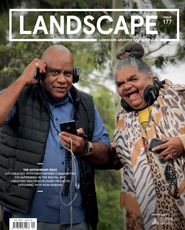
Practice
Published online: 29 Mar 2023
Words:
Michael Wright
Images:
Michael Wright,
PA Images/Alamy stock photo.,
Simon Wood,
courtesy NMA
Issue
Landscape Architecture Australia, February 2023

